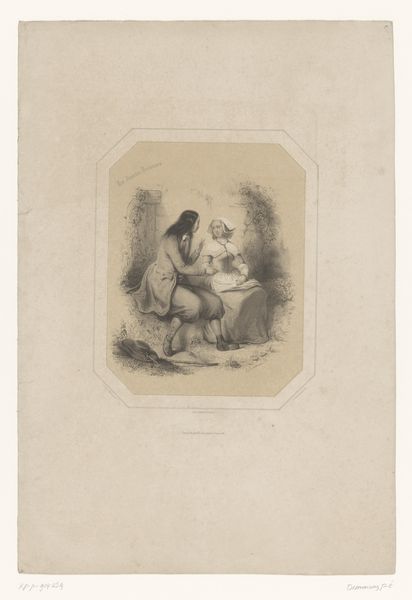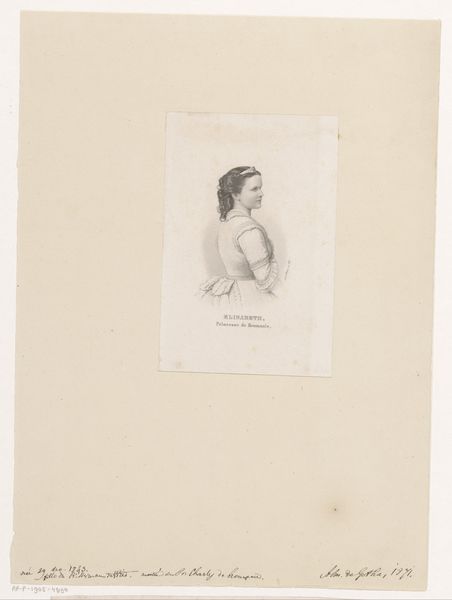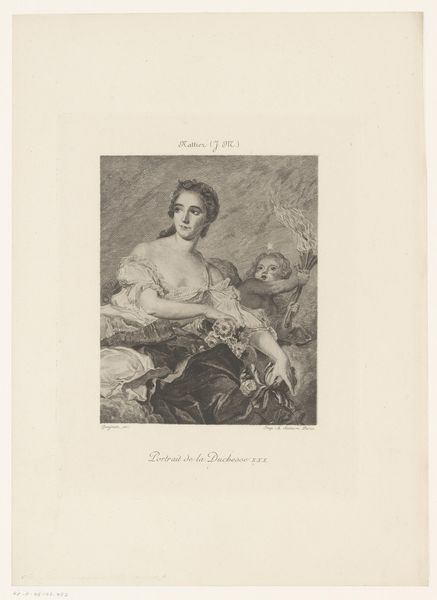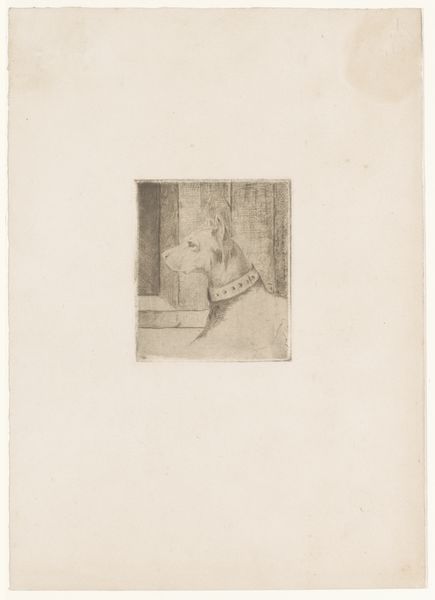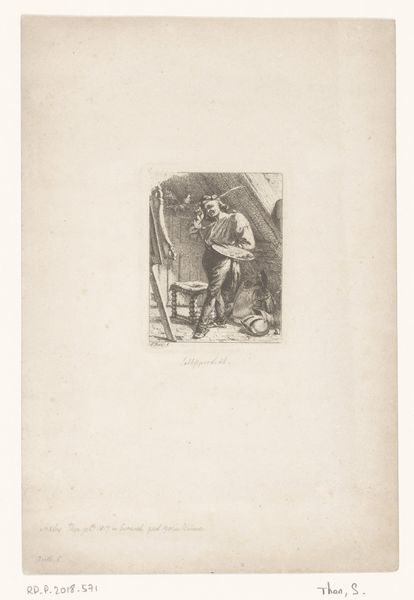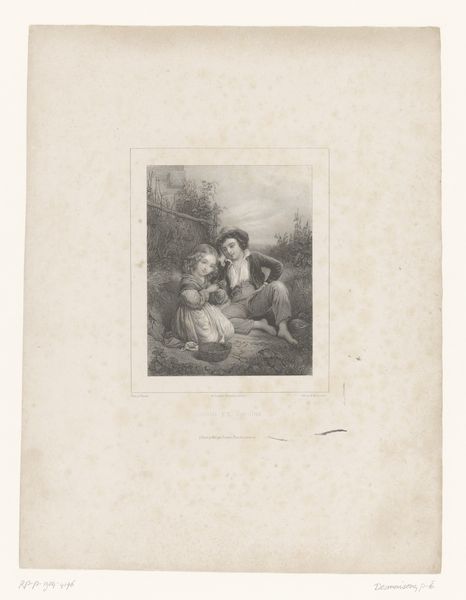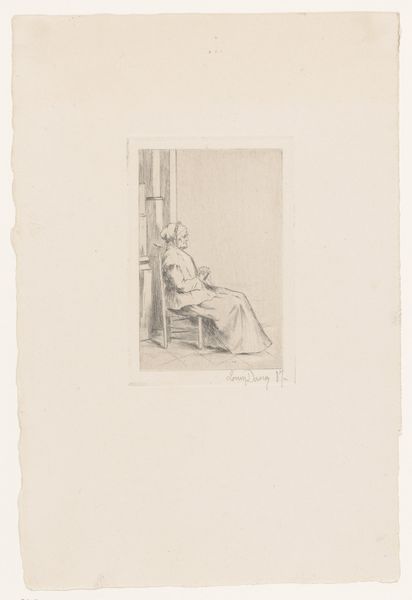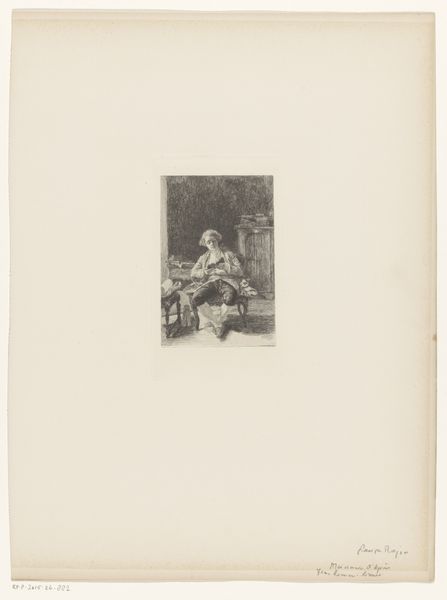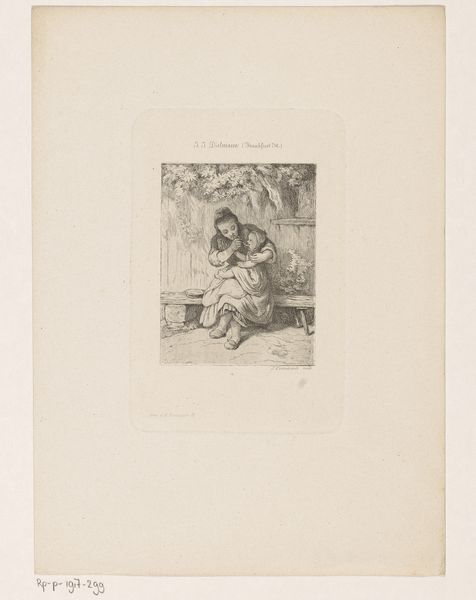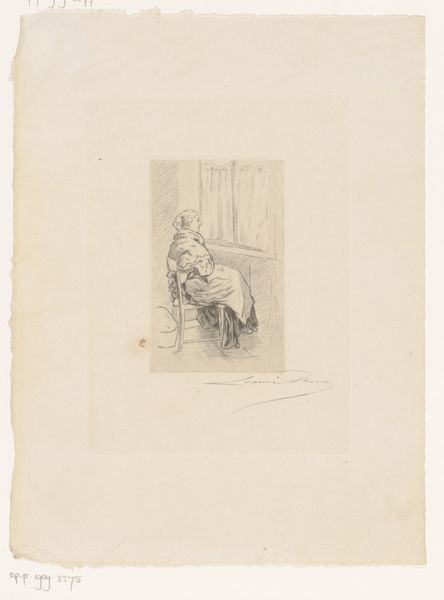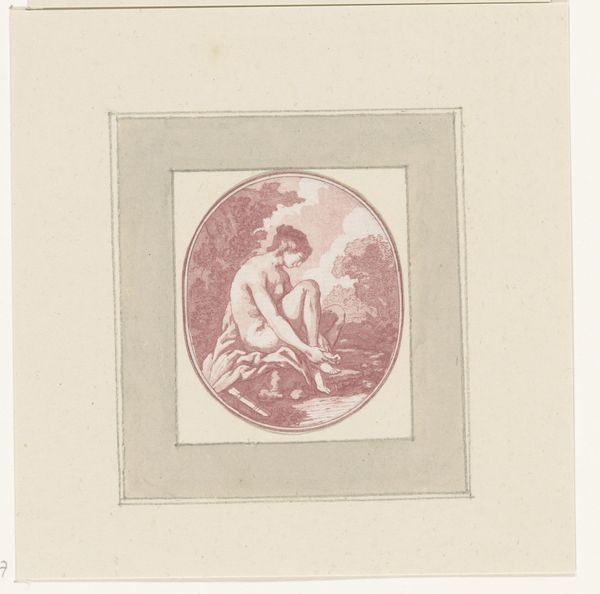
print, etching
# print
#
etching
#
landscape
#
figuration
#
nude
#
realism
Dimensions: height 150 mm, width 116 mm
Copyright: Rijks Museum: Open Domain
Théodore Frédéric Salmon made this etching of a kneeling nude woman by the water's edge sometime in the mid-19th century. The nude figure, a staple of Western art, takes on distinct meanings depending on its social and cultural context. In 19th-century France, the nude was often associated with academic art, which was promoted and regulated by institutions like the École des Beaux-Arts. These paintings often served to reinforce traditional notions of beauty and idealization. However, the image could also be used to challenge those norms. Artists like Gustave Courbet used the nude to critique academic conventions and explore more realistic depictions of the human form. To truly understand Salmon’s image, we would want to research the artist's affiliations with academic or more avant-garde circles. We would also want to know the cultural meaning of the image of the kneeling woman in 19th century France. The history of art reminds us that images are always embedded in specific social and institutional contexts.
Comments
No comments
Be the first to comment and join the conversation on the ultimate creative platform.

